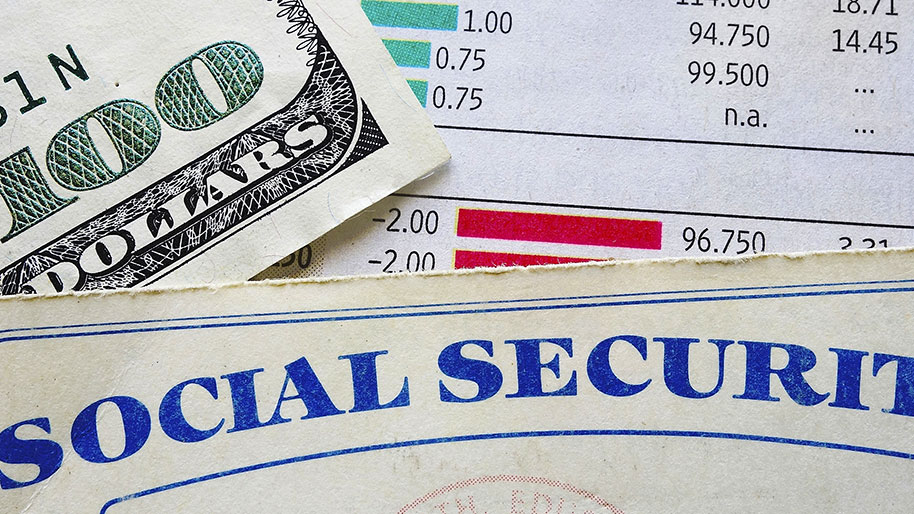![]() John Waggoner, USA TODAY9:31 p.m. EDT October 23, 2014
John Waggoner, USA TODAY9:31 p.m. EDT October 23, 2014
Source: USA TODAY
f you read any financial advertising, you know that your savings are inadequate, and you’re likely to freeze to death in the dark a few weeks after retirement. For this reason, most Americans’ retirement planning involves keeling over at their desks, or, failing that, starting a bomb-disposal unit as a retirement business.
But how much is enough? How about $1 million?
If results from the past decade are any indication, the answer is a moderately qualified “yes.” The qualification depends on how much you withdraw each month, and how you invest it.
Financial planners have long said that if you want your retirement savings to outlast you, you should start with an initial withdrawal of 4% to 5% of your savings. Because the median family income — half are higher, half are lower — is about $50,000, let’s use a 5% initial withdrawal rate. (Five percent of $1 million is $50,000.)

USA TODAY
Middle-class adults have $20K saved for retirement
How would that have worked in the past decade? Fairly well, despite the worst bear market since the Great Depression. The assumption: You withdrew $4,166 each month — $50,000 divided by 12 — at the start of each month. For returns, we used Lipper indexes for each fund category. The indexes measure the performance of the largest funds in each category, and are therefore fairly similar to what a mutual fund investor would have earned.
Your retirement started in October, 2004. Here’s how you would have fared after a decade with these four options:
• S&P 500 index funds. Even after taking $50,000 a year from your account, you’d have $1,279,000 a decade later. It would have been a scary ride, because this is a pure stock portfolio. By the bottom of the bear market, in March 2009, your account would have fallen to a bit less than $581,000. But the S&P 500 has gained 178% since March 2009, including reinvested dividends.
• Balanced funds. Traditionally a mix of 40% bonds and 60% stocks, these funds are noted for relative stability and yield. After a decade of withdrawals, you’d have about $1,134,000.
• Government bond funds. Unlike stocks, bonds really haven’t had a bear market in the past decade. But they don’t pay a great deal of interest, either. The bellwether 10-year Treasury bond yield has averaged 3.35% since October 2004. Your account after a decade of withdrawals: $899,000.
• Money market funds. You’d have problems here, because money funds have yielded less than the North Koreans on trade talks for most of this decade. Your retirement kitty after a decade of withdrawals: $640,000.
With the exception of money market funds, your $1 million would have served you reasonably well. Now let’s get on to the long list of caveats and explanations.
The most glaring caveat is inflation, which has averaged 2.3% annually the past 10 years. While annual price increases have been modest, the effects of inflation are cumulative. Had you increased your withdrawal for inflation each year, you’d be pulling out $5,111 a month by the end of the decade, about $1,000 more than you started with. Nevertheless, even adjusting upward for inflation, you’d have more than $1 million in the balanced fund and the S&P 500 fund. Hardest hit, predictably, would be the money fund, which would be closing in on $600,000.
Inflation would be the biggest danger as you continued to withdraw. If your money fund continued to earn nothing and inflation was flat — an unlikely scenario — you’d be broke in 12 more years. Inflation would speed up that process, even if your money fund started to pay interest.

USA TODAY
8 tips to maximize your 401(k) for retirement
Why have stocks held up so well? In part, because there was a bull market from 2004 to 2007, which gave your stock fund some altitude before the bear market. In your first 12 months, for example, you would have taken out $50,000, or 5%, your fund would have gained 12%. And despite the bear market, the Standard and Poor’s 500 has gained an average 8.1% per year in the past decade.
That 8.1%, incidentally, includes dividends, without which the S&P 500 has gained about 5.9% a year. Increasingly, stock returns have depended on dividends and buybacks for their total return. The current payout ratio for the S&P 500 — buybacks plus dividends — is about 5%.
What other caveats?
• These figures don’t include taxes. If you’re investing in a tax-deferred retirement account, such as a 401(k), Uncle Sam will be waiting when you take money out. If your tax rate is 15%, you’ll need to pull out $58,800 each year to get $50,000 after taxes.
•You don’t have to replace your entire income. You need to be able to pay your expenses, and that depends on a variety of factors, from whether you’ve paid off your house to how much you enjoy the blackjack tables at Las Vegas.
•You don’t have to give yourself a raise every year. If the market’s having a down year, skip the raise and tighten your belt. You can increase your withdrawals after a good year. They do happen.
•You’ll have Social Security. It’s not enough to live off, but it wasn’t intended to be. And it’s relatively easy to fix, if Congress acts soon. Stranger things have happened.
The largest problem with living off $1 million is, of course, getting $1 million, particularly if you earn the median income. Sickness, family emergencies and layoffs can set back the saving plans of the best-intentioned savers. Of course, that’s why Congress created Social Security in the first place.
MORE:Social Security benefits get another tiny raise

Amreicas Markets with John Waggoner on the Social Security cost of living raise. USA TODAY









